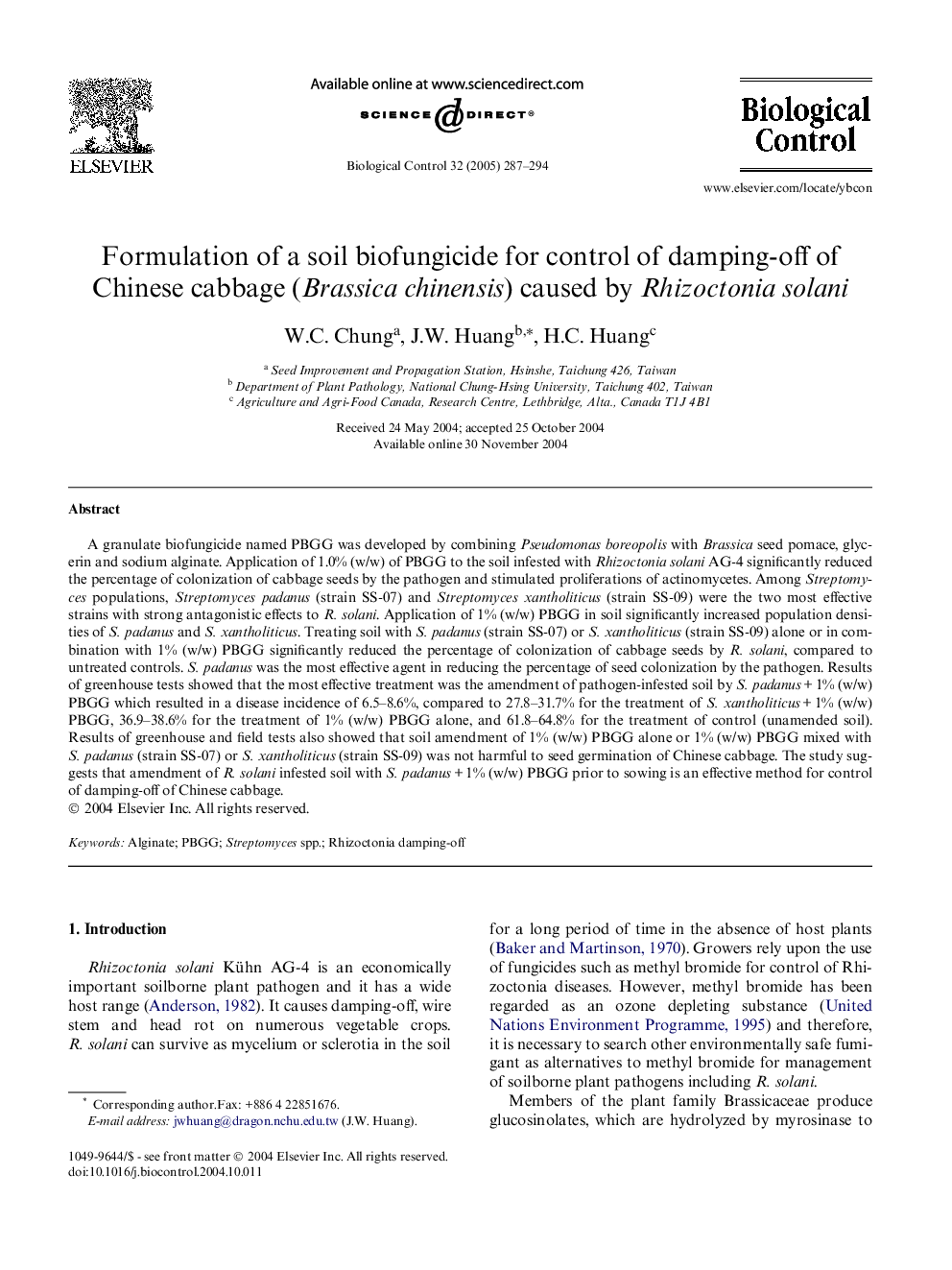| Article ID | Journal | Published Year | Pages | File Type |
|---|---|---|---|---|
| 9472043 | Biological Control | 2005 | 8 Pages |
Abstract
A granulate biofungicide named PBGG was developed by combining Pseudomonas boreopolis with Brassica seed pomace, glycerin and sodium alginate. Application of 1.0% (w/w) of PBGG to the soil infested with Rhizoctonia solani AG-4 significantly reduced the percentage of colonization of cabbage seeds by the pathogen and stimulated proliferations of actinomycetes. Among Streptomyces populations, Streptomyces padanus (strain SS-07) and Streptomyces xantholiticus (strain SS-09) were the two most effective strains with strong antagonistic effects to R. solani. Application of 1% (w/w) PBGG in soil significantly increased population densities of S. padanus and S. xantholiticus. Treating soil with S. padanus (strain SS-07) or S. xantholiticus (strain SS-09) alone or in combination with 1% (w/w) PBGG significantly reduced the percentage of colonization of cabbage seeds by R. solani, compared to untreated controls. S. padanus was the most effective agent in reducing the percentage of seed colonization by the pathogen. Results of greenhouse tests showed that the most effective treatment was the amendment of pathogen-infested soil by S. padanus + 1% (w/w) PBGG which resulted in a disease incidence of 6.5-8.6%, compared to 27.8-31.7% for the treatment of S. xantholiticus + 1% (w/w) PBGG, 36.9-38.6% for the treatment of 1% (w/w) PBGG alone, and 61.8-64.8% for the treatment of control (unamended soil). Results of greenhouse and field tests also showed that soil amendment of 1% (w/w) PBGG alone or 1% (w/w) PBGG mixed with S. padanus (strain SS-07) or S. xantholiticus (strain SS-09) was not harmful to seed germination of Chinese cabbage. The study suggests that amendment of R. solani infested soil with S. padanus + 1% (w/w) PBGG prior to sowing is an effective method for control of damping-off of Chinese cabbage.
Keywords
Related Topics
Life Sciences
Agricultural and Biological Sciences
Agronomy and Crop Science
Authors
W.C. Chung, J.W. Huang, H.C. Huang,
